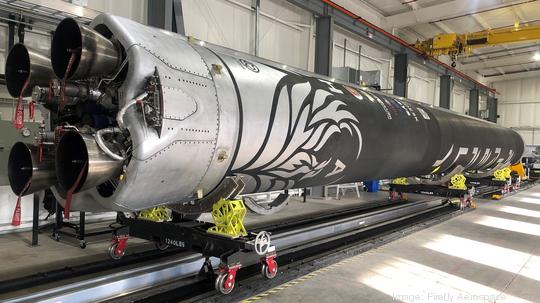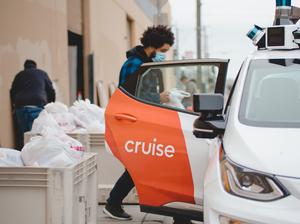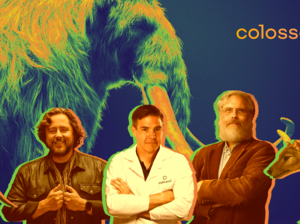
UPDATE: Firefly says its launch has been delayed due to weather. In a tweet, the company said: "New launch window is now no earlier than September 29th. Alpha stands ready to launch."
Second time's a charm. Or at least that's what Firefly Aerospace is hoping.
The Cedar Park-based rocket company is geared up for its second attempt to send a rocket — and its accompanying payload of scientific projects and tiny satellites — into orbit on Sept. 19.
This follows Firefly's first attempt a little over a year ago, which ended in a fiery explosion above the Pacific Ocean a couple minutes after liftoff.
A lot has happened since then for the company.
It now has a new CEO, Bill Weber, who took the helm Sept. 1 after founder and CEO Tom Markusic stepped down in June to be chief technical advisor and board member. It has a new majority investor, private equity firm AE Industrial Partners, which bought out Noosphere Venture Partners in March after the Committee on Foreign Investment in the U.S. requested an ownership change because of Noonsphere's ties to Ukraine and Russia.
And it has a lot to prove as competition to find cheaper and faster ways to deploy tech in space increases.
The planned launch on Sept. 19 from Vandenberg Space Force Base follows at least one prior delay, and, as is the case with all rocket launches, weather, malfunctions and other issues could also scrub this launch.
But, whenever it blasts off, Firefly's Alpha rocket will carry the dreams of many. The flight, which Firefly is calling "To The Black," will attempt to launch several satellites into low Earth orbit. If it makes it out of our lower atmosphere, it will begin maneuvers to prepare to deploy its payload.
Among the items on board will be:
- A 1.6Kg cube sat from the Teachers in Space program that will collect flight data during the mission and be available for educators to compare to other rocket launches.
- A 9 pound NASA TecEdSat carrying experiments for its Nano-Orbital Workshop.
- A 6.3Kg Libre Space Foundation PicoBus, which will deploy picosatellites and develop a test for a free and open telecommunications constellation.
The rocket will also be carrying a special capsule of artwork, including 128 postcards made by children around the country, as well as space artwork by the Girl Scouts of Austin and a "Henry the Astronaut" book by Jonna Ocampo.
The Everyday Astronaut's YouTube channel will broadcast the launch live. The launch window opens at midnight Pacific Standard Time on Sept. 19.
Firefly's second attempt also comes just as the company's space transportation services subsidiary announced it was selected by NASA to launch some of its missions. That multi-piece five-year contract has a maximum value of $300 million.
Meanwhile, the company will also be prepping for its third launch, which is currently planned for sometime in November.







